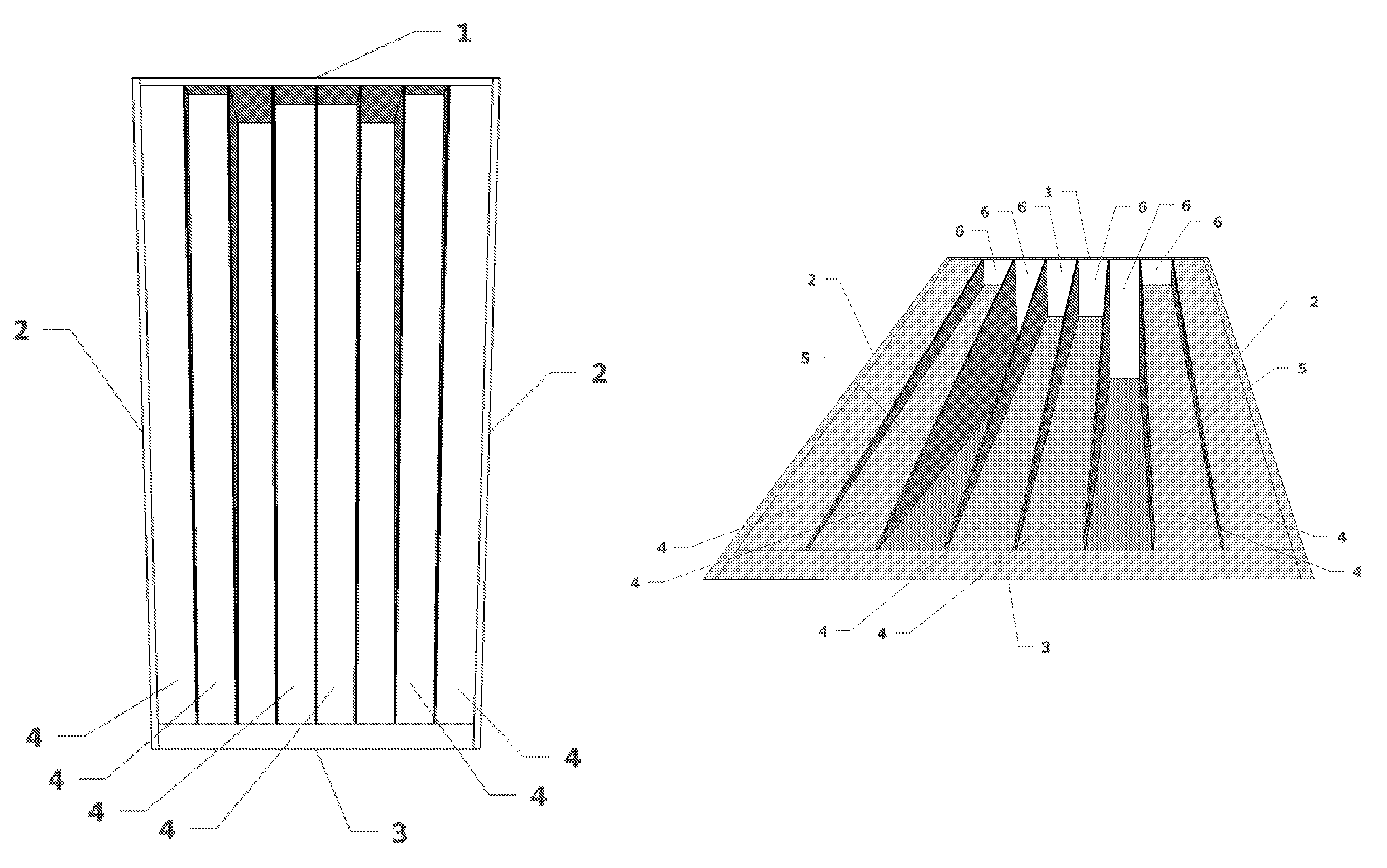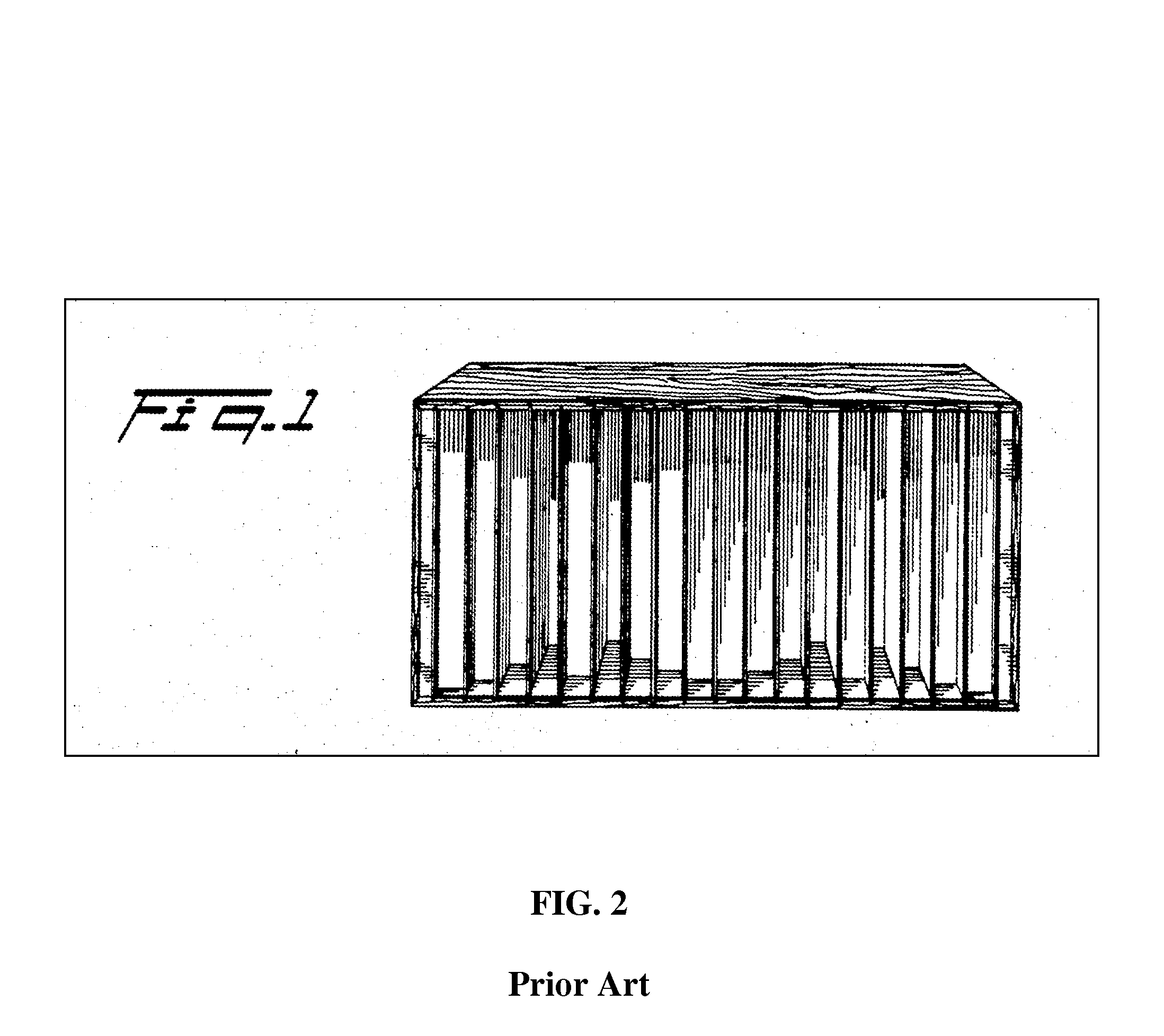Wedge-shaped acoustic diffuser and method of installation
a technology of acoustic diffuser and a wedge shape, applied in the field of acoustics, can solve the problems of not being able to meet the needs of manufacturing materials, the difference between the two features of 3 flat panels, and the improvement of the diffusive effect, so as to achieve the effect of positive change of the existing acoustic of the spa
- Summary
- Abstract
- Description
- Claims
- Application Information
AI Technical Summary
Benefits of technology
Problems solved by technology
Method used
Image
Examples
Embodiment Construction
[0104]The Acoustic Ramp may be used in many locations, such as a recording studio control room, a home theater, a classroom, a performance venue, a place of worship or other enclosed or partially enclosed environment where critical listening, sound reproduction or controlled acoustics is required. The Acoustic Ramp could also be used to control acoustics in tunnels or overpasses or other locations where traffic or mechanical noise needs to be mitigated.
[0105]The following is a partial list of some of purposes or uses of the present invention. While there are many other possible uses, these are some of the most relevant:[0106]1. To diffuse or scatter reflected acoustic energy[0107]2. To reduce or eliminate the phenomenon commonly referred to as flutter echo, where sounds bounces off of flat walls and creates a distinct echo with a short delay for each wall of a room[0108]3. To reduce reflected acoustic energy without using acoustically absorptive materials that often create what is c...
PUM
| Property | Measurement | Unit |
|---|---|---|
| angle | aaaaa | aaaaa |
| angle | aaaaa | aaaaa |
| length | aaaaa | aaaaa |
Abstract
Description
Claims
Application Information
 Login to View More
Login to View More - R&D
- Intellectual Property
- Life Sciences
- Materials
- Tech Scout
- Unparalleled Data Quality
- Higher Quality Content
- 60% Fewer Hallucinations
Browse by: Latest US Patents, China's latest patents, Technical Efficacy Thesaurus, Application Domain, Technology Topic, Popular Technical Reports.
© 2025 PatSnap. All rights reserved.Legal|Privacy policy|Modern Slavery Act Transparency Statement|Sitemap|About US| Contact US: help@patsnap.com



